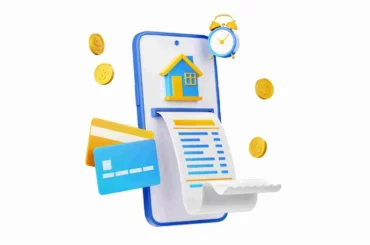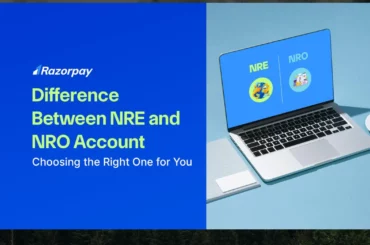Table of Contents
UPI Transaction Limit Per Day
As per NPCI, the UPI transaction limit for normal UPI transactions is ₹1 lakh per day. Moreover, NCPI allows a maximum of 20 UPI transactions per day. The maximum UPI daily transfer limit can vary from bank to bank, ranging between Rs.25,000 and Rs.1 lakh.
As of April 2024, UPI transactions related to capital markets, collections, insurance, and foreign inward remittances have a limit of ₹2 Lakh per day. UPI limit of ₹5 lakh is applicable for payments to educational institutions and healthcare effective 10th January 2024, provided they are “Verified Merchants”
Additionally, For IPOs and retail direct schemes, the UPI limit per transaction or per day is also ₹5 Lakh.
If you want to transfer more money or conduct a greater number of transactions, you will have to wait for the 24-hour time period to get over.
Surcharge or Interchange Fee on UPI Payments
An interchange fee is the transaction fee a merchant must pay when a customer processes a transaction. As an example, if a customer makes a payment through UPI using a GPay QR code at a store, the merchant should pay the interchange fee to the payment service provider, i.e. Google Pay.
Interchange fees are the fees imposed on the merchants when the customer processes UPI transaction through a Prepaid Payment Instruments (PPI).
The interchange charge varies depending on the type of transaction. These categories are as follows –
-
Fuel: 0.5%
-
Post office, telecom, utilities, agriculture, and education: 0.7%
-
Supermarket: 0.9%
-
Insurance, mutual funds, and railway: 1.1%
UPI payment surcharges cover the expenses associated with processing, accepting, and authorising transactions.
Related Read: How To Make UPI Payment Without Internet?
UPI Transaction Payment Charges as per New Guidelines
Customers do not have to pay any interchange fees for UPI payments made through PPIs for Peer to Peer (P2P) and Peer to Merchant (P2M) transactions. P2P transactions mean transferring an amount between two individuals or individual accounts through UPI. P2M is where customers make payments through UPI to merchants for purchases.
In short, any number of normal customer or individual transactions or UPI payments from one bank account to another are absolutely free. Thus, UPI payments of any amount for personal transactions are totally free.
As per the 2024 NCPI guidelines, a merchant has to pay an interchange fee of up to 1.1% of the transaction amount on UPI transactions above Rs.2000. These charges are applicable for transactions made through prepaid payment instruments (PPI) like wallets, Amazon Pay, Google Pay, Phonepe, etc.
The interchange fee will be borne by the merchant’s bank (the receiver of the payment) to the payer’s bank (the sender of the payment) to cover the costs of processing and authorising the transactions.
Related Read: Updated UPI Transaction Limit for Tax Payments
What is a Prepaid Payment Instrument (PPI) in UPI?
A Prepaid Payment Instrument in UPI refers to a digital wallet that lets you store money and conduct real-time online transactions. These can include wallets such as PhonePe, Paytm, SODEXO vouchers, Amazon Pay, and Freecharge.
PPIs are a convenient way to make payments by scanning a UPI QR code, entering the receiver’s UPI ID, or using other payment options provided by these platforms. PPIs offer flexibility, security, and easy access to funds for various online purchases and services.
The National Payments Corporation India (NPCI) has also proposed to put a 30% volume cap on all UPI apps. This is to ensure that these UPI apps don’t form a monopoly on the UPI market. However, the deadline for limiting the volume cap for TPAPs (Third Party App Providers) has been extended by 2 years up to December 31, 2024, from an earlier deadline of Jan 1, 2023.
Related Read: How to Find UPI ID Using Google Pay?
Will Customers Pay the Interchange Fee on UPI Payments?
You as a customer will not have to pay the interchange fees or any transaction fee for UPI payments made through PPIs for P2P and P2M transactions.
P2P transactions involve transferring an amount between two individuals or individual accounts through UPI, while P2M refers to making payments through UPI to merchants for purchases.
The interchange charges only apply to PPI merchant transactions where the UPI is linked to a mobile wallet or payment service provider. You can make UPI payments without incurring any transaction charges when transferring funds to family, friends, or other individuals, and when making payments directly into a merchant’s bank account.
Related Read: How to Reverse Wrong UPI Transactions?
Who Will Pay the Interchange Fees?
Merchants will pay the interchange fee of upto 1.1% on UPI transactions above Rs.2000. For example, when you make a payment using UPI at a store or online, the applicable interchange fee will be levied on the merchant side.
Fortunately, small merchants are exempt from this fee. Medium-sized merchants, on the other hand, will only be required to pay interchange fees for transactions exceeding Rs. 2,000.
For high-value transactions, the decision to absorb the increased cost or pass it on to the customers rests with the merchants. This provides them flexibility in managing their costs.
The NPCI has introduced a wallet-loading service charge for PPI issuers. They are now required to pay 15 basis points (0.15%) as a service charge to the remitter banks when recharging wallets with amounts exceeding Rs. 2,000.
For instance, if you top up your Amazon wallet with more than Rs. 2,000, Amazon will pay a wallet-loading service charge of 0.15% to your bank. That means you, as a user, won’t face any additional fees when recharging your wallet for conducting UPI transactions. The burden of this fee falls on the PPI issuers, not the customers, making digital transactions more convenient and cost-effective.
The interchange fee is typically distributed between banks, payment service providers, and merchants within the payment ecosystem. The payer bank collects this fee from the merchant’s account to process the transaction. It helps cover operational costs and ensures a smooth flow of funds between different participants in the UPI system.
Related Read: What is the SBI UPI Transaction Limit Per Day?
UPI Transaction Limits for different UPI Apps
Different UPI apps have varying transaction limits. Google Pay (GPay), Phonepe, PayTM, and Amazon Pay UPI have set a limit of Rs. 1 lakh per day.
Understand Gpay limit per day charges in detail.
Read about Phonepe limit per day and charges
Additionally, Amazon Pay UPI allows new customers to carry out transactions up to Rs. 5,000 only for the first 24 hours. Keep in mind though, that these limits may vary among banks and payment service providers.
Related Read: What To Do If Your Google Pay Transaction Fails: How To Fix Payment Problems?
UPI Transaction Limits for Top Banks in India
The basic UPI limit per day and number of transaction limits set by NPCI are common, that is, Rs 1,00,000 in a day or up to a maximum of 20 transactions. However, banks can have individual limits. Here are the details of some of the most common banks –
|
Bank Name |
UPI Daily Limit |
UPI Transaction Limit |
|
SBI |
Rs. 1,00,000 |
Rs. 1,00,000 |
|
PNB |
Rs. 50,000 |
Rs. 25,000 |
|
IDFC |
Rs. 1,00,000 |
Rs. 25,000 |
|
Allahabad Bank |
Rs. 1,00,000 |
Rs. 50,000 |
|
Bank of India |
Rs. 1,00,000 |
Rs. 10,000 |
|
Indian Overseas Bank |
Rs. 1,00,000 |
Rs. 50,000 |
However, these limits are subject to change and may differ based on the type of UPI transaction, such as peer-to-peer or merchant payments. It is important to check with your bank or payment service provider for the specific UPI transfer limit applicable.
Related Read: UPI ATM Cash Withdrawal: How to Withdraw Money Using UPI ATM?
Frequently Asked Questions (FAQs)
1. How can I find my bank’s UPI transaction charges?
Usually, for normal transactions, i.e. bank account to bank account-based UPI payments, there are no charges per NPCI. For PPI transactions, i.e. payments made through wallets or other prepaid instruments, there are interchange fees of up to 1.1% on transactions above Rs. 2,000 that are borne by merchants.
2. How can I avoid or minimize UPI transaction charges?
As a merchant, you can avoid or minimize UPI transaction or payment gateway charges by following these tips:
-
Use bank account-based UPI payments instead of wallet-based ones. There are no charges for bank-to-bank UPI payments.
-
If you use wallet-based UPI payment links, try to keep the transaction value below Rs. 2,000. The interchange fee of 1.1% is only applicable for transactions above Rs. 2,000.
-
Negotiate with your UPI payment gateway or payment service provider to reduce the interchange fee or pass it on to the customer.
3. Are there any exemptions from UPI transaction charges?
Yes. For normal bank-to-bank UPI transactions, there are no charges as per NPCI. Besides that, transactions below Rs. 2,000 do not attract interchange fees for payments made through wallets or other prepaid instruments.
4. Can merchants pass on UPI transaction charges to customers?
Merchants have the option to pass on UPI transfer charges to customers as per the guidelines issued by the Reserve Bank of India (RBI).
5. Are UPI transactions taxable?
No, UPI transactions are not taxable. However, other applicable taxes like the Goods and Services Tax (GST) may be levied on goods or services purchased through UPI transactions.




